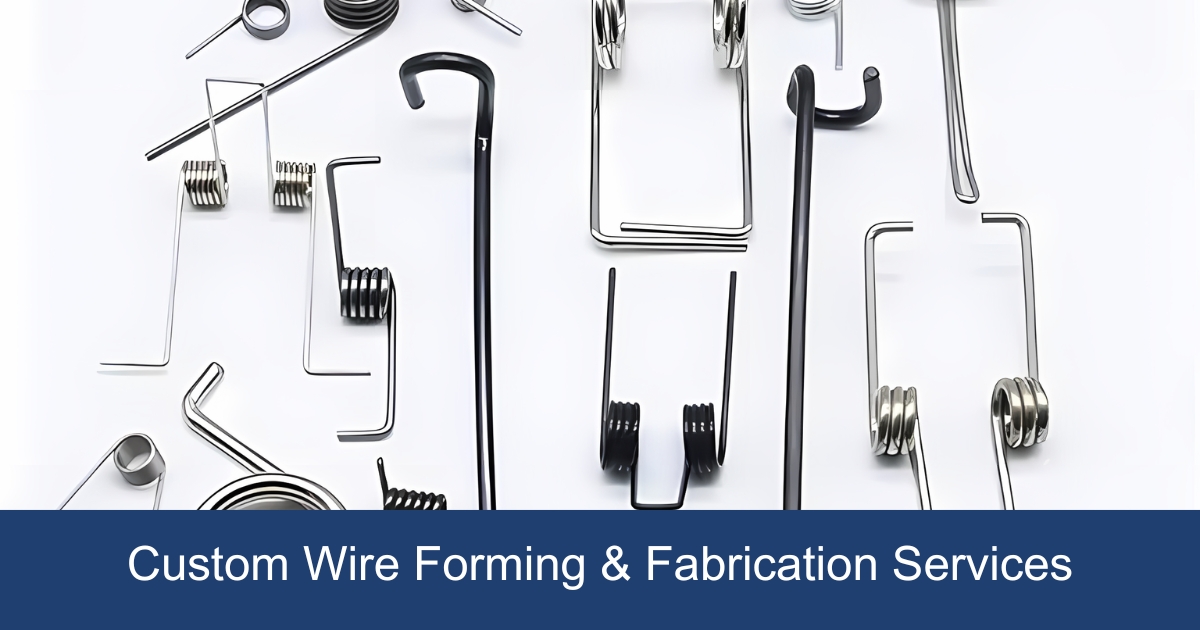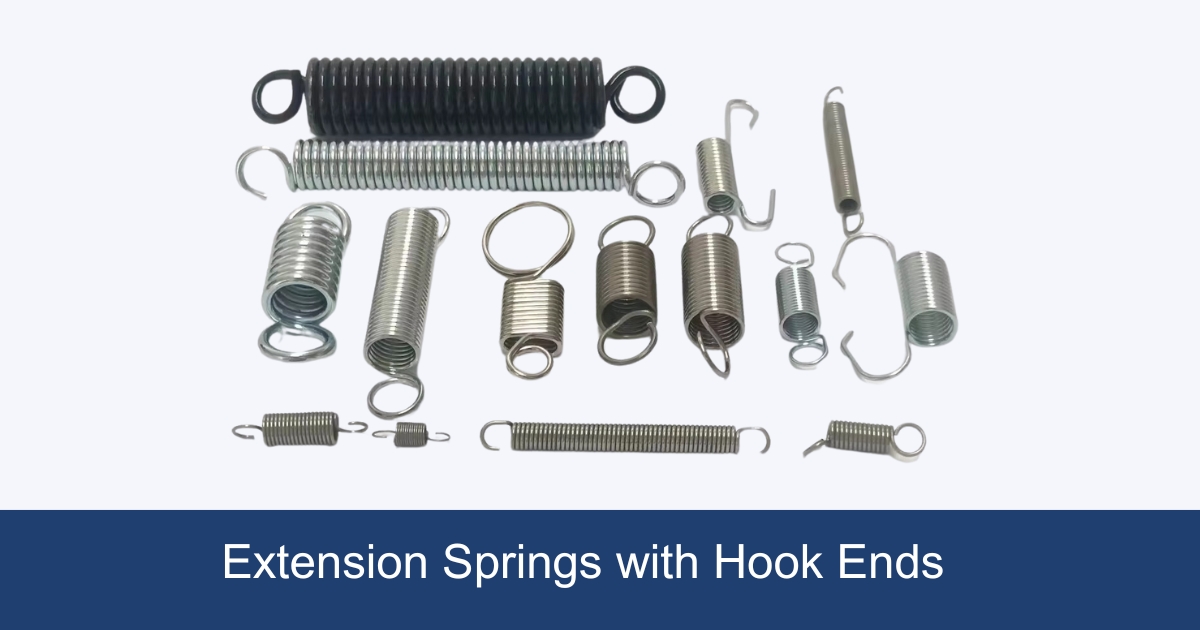Key Takeaways
- Extension springs are a vital part of garage doors, offering the tension needed to raise and lower the door.
- What to consider when choosing extension springs.
- You can save even more by buying extension springs in bulk. Carefully consider your needs and storage capacity before spending a lot of money on one.
- Regular maintenance, such as lubrication and inspection of extension springs, can prevent unexpected failures and prolong their lifespan.
- Know exactly what your garage door system needs. This knowledge helps you make informed decisions about selecting and caring for extension springs.
- If you’re unsure about installation or upkeep, consult with a professional to ensure safe and optimal performance.
Need to buy extension springs for garage doors in bulk. You want solid, stout springs that don’t cost a fortune.
This guide helps you discover the best options while saving time and money. Learn to evaluate quality, pick vendors, and manage your supply chain.
We cut through the jargon and equip you with clear insights to make smart decisions. Whether you’re a purchasing manager or in operations, this resource keeps it simple and practical.
Jump in and learn how to get the best springs for the best prices.
What Are Extension Springs
Function and Purpose
To get an idea of how extension springs operate, visualize them on each side of your garage door.
These springs help lift the door, storing energy as they stretch. When you open the door, the spring pulls back at a steady rate. That balances the part of the door that hangs down.
When you shut the door, the cable pulls on the spring again, helping to offset the door’s weight.
Here’s how extension springs ensure your garage door opens and closes without a hitch.
They allow you to easily lift heavy doors without straining yourself or breaking the mechanism.
Types of Garage Door Springs
When it comes to garage doors, you usually see two types of springs: extension springs and torsion springs.
About 90% of garage doors use extension springs because they are simple and effective.
Extension springs attach directly to the door with lift cables and pulleys.
Torsion springs sit on a shaft or tube above the door. They twist instead of stretching, and that’s a big difference between these two kinds of springs.
The type you should choose depends on your garage door’s design and weight.
Just be sure to choose based on how heavy your door is; getting this wrong can cause headaches down the road.
Role in Garage Door Systems
Extension springs fit into a larger system that helps your garage door function.
The cable in this arrangement is as important as the springs themselves.
It joins it all together and allows it to move smoothly as you open or close the door.
The spring connects to the bottom of the door through a lift cable that travels over a stationary pulley. One end attaches to the spring while the other has its terminus at the upper part of the track.
This design offers balance and support for your garage door.
How to Choose Extension Springs
1. Determine Spring Requirements
The weight of your garage door is the best place to begin searching for the right extension spring.
Knowing this helps you pick a spring that can handle the load.
You can refer to the manufacturer’s specs or measure it directly with a scale. Simply put a bathroom scale in the middle of the door and read the weight.
2. Measure for Accurate Sizing
Measure your garage door to size it correctly. The inner diameters of your current springs also matter. Grab a tape measure and check this dimension.
This step guarantees you receive springs that fit correctly and function appropriately.
3. Identify Spring End Types
Different types of ends exist on extension springs. It’s important to know what type you have when it comes time to replace it.
Pay attention to how the ends are shaped—some may be hooks while others will be loops. Identifying these will let you buy the right spring that fits your setup.
4. Consider Cables and Pulleys
Don’t forget about cables and pulleys! These components work in tandem with your extension springs.
Check their condition since they can still cause issues even after you replace the springs. If they appear frayed or damaged, replace them with the springs so the door will operate smoothly.
5. Decide on Single or Pair Replacement
Consider replacing one spring or both. It’s best to replace extension springs in pairs since they work together. Replacing just one can cause uneven wear and may cause the other spring to fail sooner.
Either way, this approach saves you time and hassle down the road.
6. Follow Ordering Guidelines
When ordering, keep everything in mind—weight, size, end type, and whether you’re getting one or two springs.
Most suppliers give a guide for how to order based on your own measurements and requirements.
Following these tips helps make sure you get exactly what you need, without guesswork.
Factors in Bulk Purchasing
Assess Quality Standards
Make sure the springs are in good condition to ensure safety and performance.
Look for springs created with high-grade steel. These springs last longer and take daily use better.
The springs must be made according to industry standards and be durable. You’d like to avoid cheap options that will fail you soon.
If you’re buying in bulk, inspect each batch. Even a minor defect can spell disaster.
Springs should have a uniform finish with no rust or other signs of corrosion.
Always ask about warranties, says Becker. A good warranty indicates that the manufacturer believes in its product.
Evaluate Cost-Effectiveness
Understanding costs helps you make smart decisions.
If you tackle the garage door springs yourself, you can expect to spend around $50. However, it will cost you about $400 if you’re hiring a pro.
Should you require replacement, keep in mind that both springs typically age at the same time. Replacing only one spring can save you money now, but you’ll wind up paying more later.
When you buy in bulk, your price per unit typically decreases. Shop around among different vendors to find the best deal.
Don’t forget that demand impacts prices as well. When demand is high, costs go up.
Select Reliable Vendors
Finding trustworthy suppliers matters.
Do your research on the vendors before you make a purchase.
Seek out companies with excellent reviews and reputable images.
Ask about their returns and customer service. A good vendor backs you up after you purchase the courses.
Look for local suppliers as well as online ones. Local businesses also tend to offer faster shipping and easier returns.
See if they provide installation or advice on spring selection.
Manage Supply Chain Logistics
Plan how you’ll get your springs in. Consider storage space and delivery options.
If you are ordering a large quantity, coordinate delivery times so you’re not stuck waiting.
Have a plan to monitor inventory levels and check that you get enough springs when you need them.
Check stock regularly and order more before you run out.
This way, you can avoid downtime when you run low on supplies.
Quick Fixes and Maintenance
Temporary Solutions for Broken Springs
When fixing a broken spring, you first have to start with safety.
Always disconnect the garage door opener first. This step ensures no unexpected movements while you work.
If one spring breaks, replace both springs simultaneously. The other spring probably has similar wear and will likely fail soon.
You’ll just need a bathroom scale to weigh the springs. Assemble, then release tension gently before using.
Once you have the correct size, install the new springs. Be sure to reattach the safety cable.
Make sure there’s enough tension in the spring post-installation.
Regular Maintenance Tips
To keep your garage door running smoothly, do regular maintenance.
Set a yearly appointment for a professional technician to examine it. They’ll check the springs and other key components. This inspection catches issues before they can become problems.
Lubricate the springs every few months, especially before seasonal changes or in humid areas. A little oil goes a long way in keeping them moving smoothly.
Keep in mind that extension springs tend to last about 10,000 cycles—one cycle is one complete opening and closing of the door.
For normal use, it is wise to replace your garage door extension springs every 7-9 years.
Staying on top of these tasks keeps your home safe. It also protects your essential storage areas.
Conclusion
Finding the right extension springs for your garage door doesn’t have to stress you out.
You now know what the best options are. You know how to properly select them and what to look for when purchasing in bulk.
If you want to keep your garage door running smoothly, you’ve got to know how to maintain those springs, too.
Whether you’re a DIY pro or just getting started, understanding these basics helps you make smart choices.
Don’t wait until something breaks!
Check your springs today and get things moving again.
Ready to jump in with both feet?
Get the right tools and get after those garage door needs.
Your door will thank you!
Frequently Asked Questions
What are extension springs used for in garage doors?
Extension springs are vital parts that enable garage doors to raise and lower. They hold energy as the door closes and then release it to help open.
How do I know if my extension springs need replacing?
Signs include visible wear, rust, or if the door feels heavy when opening. If the springs have become stretched or broken, it’s time to replace them.
Can I install extension springs myself?
Yes, but with caution. Installing extension springs can be dangerous due to high tension. If in doubt, hire a professional to be safe.
What factors should I consider when choosing extension springs?
Take into account the weight of your garage door, spring length, wire diameter, and the cycle life you want. These features ensure proper performance and a long lifespan.
Are there different types of extension springs?
Yes, these types include oil-tempered and galvanized springs. Oil-tempered springs resist corrosion better, while galvanized springs offer durability in various conditions.
How often should I maintain my extension springs?
Regular maintenance every six months is recommended. Lubricate the springs and check for wear to extend their lifespan and maintain optimal performance.
Where can I purchase extension springs in bulk?
You can purchase extension springs at hardware or specialty stores, or from online retailers. Bulk buying also tends to be cheaper and gives you backups if things go haywire.



